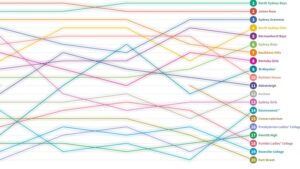
A groundbreaking artificial intelligence system, capable of predicting personal life events and even estimating the time of death, has been developed by researchers from Denmark and the United States. This innovative model, known as life2vec, has sparked both excitement and ethical concerns due to its potential implications. By analyzing life events in a manner similar to language processing models, life2vec offers unprecedented insights into human lives.
The project is a collaboration between the Technical University of Denmark, University of Copenhagen, IT University of Copenhagen, and Northeastern University in the United States. The AI model uses life-event sequences from millions of people to identify patterns in education, health, work, and income, demonstrating how advanced transformer-based AI models can forecast personal outcomes with striking precision.
Understanding the Life2vec Model
At the core of life2vec is a machine learning technique that transforms real-life data into a mathematical language. This method allows the AI to view a person’s life as a series of interconnected events, akin to reading a story. The model was trained on a unique dataset from Denmark, comprising daily life-event records for six million people over a decade, covering aspects such as health, education, income, and work hours.
Sune Lehmann, a professor at DTU and the study’s lead author, explained, “What’s exciting is to consider human life as a long sequence of events. Usually, transformer models are used for analyzing sentences. But here, we use them to analyze life sequences—events that have happened in a person’s life.”
Scientific Insights and Predictions
Life2vec’s ability to predict life events and personal traits extends beyond basic forecasts. It can answer complex questions, such as whether a person might die within the next four years, with shocking accuracy. The model’s predictions often align with real-world outcomes, revealing that individuals with higher incomes or leadership roles tend to live longer, while those with certain mental health conditions or low skill levels face higher risks of early death.
“Scientifically, what’s exciting for us is not so much the prediction itself, but the aspects of data that enable the model to provide such precise answers,” said Lehmann.
The model’s results reflect well-known trends in social science, offering both validation and new insights. By creating a shared “embedding space,” researchers can map events like a heart attack or job promotion into a single structure, allowing for deep analysis of how various factors relate and affect future possibilities.
Ethical Implications and Concerns
While life2vec’s achievements mark a significant advancement in AI technology, they also raise critical ethical concerns. The model’s reliance on detailed life histories brings privacy, fairness, and control over personal data into sharp focus. If such information is misused or falls into the wrong hands, it could lead to serious harm.
“We’re entering a moment where we need to think carefully,” Lehmann warned. “Technologies that predict human behavior already exist inside tech companies. They track our actions, profile us, and try to influence our choices. These systems should be part of the democratic conversation.”
Experts caution that without transparency and proper oversight, these tools could reinforce biases, mislabel individuals, or create new forms of surveillance.
The Future of AI in Personal Forecasting
The next step for life2vec involves expanding its data sources to include written text, images, or social network patterns. This broader view could enhance the model’s accuracy and detail, linking personal behavior, social ties, and health trends in unprecedented ways. Such advancements may reshape how governments and scientists address major challenges, from public health to social policy.
If used ethically, life2vec could become a powerful tool for supporting well-being and planning for the future. The fusion of language models with life data may herald a new era of science, transforming the unpredictable story of a life into a map of possibilities.
Research findings are available online in the journal Nature Computational Science.







